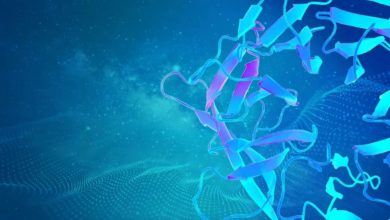Natural toxic compounds in food
Dr.Ureshani Karunaratne - University of Sri Jayewardenepura

Due to the worst marine pollution in history which occurred off the coast of Sri Lanka caused by the X-Press Pearl the ship which caught fire before sinking and also with the introduction of organic fertilizers instead of chemical fertilizers for agriculture, our attention was drawn to the toxins that accumulate and can accumulate in food.
Do toxins get added to food only artificially in this manner? Certainly not. Some foods naturally contain toxins.
Even though some of these toxins may be contained in foods slightly, if a significant amount is ingested at one time, allergies, poisoning or even death may occur.
These toxins which are naturally present in foods are secondary metabolite compounds produced by the organisms themselves. These toxins may be a naturally occurring compound or a by-product of a natural/metabolic process in a plant or animal or fungus.
Although these toxins may not be harmful to the organism that produces them, in the event the organism with the toxin gets eaten by another organism an adverse condition may occur.
Although these toxins are naturally present in foods, they may not always be present in those foods. Also, either these toxins can be removed from food before preparation or food can be prepared in a manner that removes such toxins.
Toxins found naturally in foods can be classified as phytotoxic, animal toxin and mycotoxin.
This article focuses on toxins present in plant-based foods.
Natural plant toxins
It is no secret that plants are used in Ayurvedic and indigenous medicine. We also know that some Western medicines are made from medicinal compounds found in plants. Although with high medicinal value, some plants have their own unique natural toxins.
These toxins can be divided into chemical groups according to their function. For example, protein inhibitors, amylase inhibitors, lecithin, cyanide-generating glycosides, anti-vitamins, oxalates, toxic amino acids can be shown. In addition, saponins, tannins and alkaloids are also found as toxins.
Let us get to know only a few of these briefly.
Proteinase Inhibitors
When a protein inhibitor is present in food, it binds to the enzymes involved in protein digestion. Then the protein misses the opportunity to bind to the enzyme. As the protein does not bind to the digestive enzyme, the protein digestion process is impaired.
See the image below, it will make the process clearer to you.

Examples include trypsin inhibitors. These trypsin inhibitors bind to the trypsin enzyme. Then, as the proteins digested by the trypsin enzyme, do not bind to the trypsin enzyme, the protein digestion process is impaired
Protein inhibitors are found in legumes such as soybeans, beans and peas.
Amylase inhibitors
Amylase is the enzyme that digests starch. When a food contains an amylase inhibitor, it binds to the amylase enzyme and stops the activity of the enzyme. That is, the starch digestion process is impaired.
Such amylase inhibitors are commonly found in foods such as wheat, rye, and beans.
Lectins
These are proteinaceous compounds, sometimes found as proteins bound to carbohydrates.
Lectins interact with blood cells to cause blood to clot. Lectins can bind to sugar molecules on the surface of blood cells.It is similar to the mechanism of antigen and antibody binding, but lectins bind to sugars in cells not as a response to the immune system.
Different lectins are found as glucose lectin and galactose lectin according to the specificity of binding to sugar molecules.
Lectins are contained in Pisum SP, bean species (Phaseolus vulgaris, Phaseolus lunatus) and Vicia and Canavalia species.
Phytate
Plants usually store phosphorus as phytates.
One phytate molecule consists of about 06 groups of active phosphates . When at physiological pH value , mineral salts bind to phytate molecules and form insoluble complexes. Phytate molecules binds with another phytate molecule as well as protein, starch and enzyme molecules to form insoluble complexes.
Due to the formation of insoluble complexes with minerals, the amount of minerals that can be obtained from a food is reduced.
However, certain enzymes in the digestive system can break down this complex and the complex is broken down during the food manufacturing process. Then mineral absorption problems abundance problems do not occur.
Phytate is mainly found in foods such as wheat, rye, corn, soybeans, lettuce, and spices such as coriander and mustard.
Cyanogenic glycosides
Cyanogenic glycosides occur naturally in more than 2500 plant species.
These cyanogenic glycosides produce cyanide in the presence of acidic conditions or acids or in the presence of the corresponding active enzyme.
Let us see how cyanide is produced from cyanogenic glycosides through an enzymatic process.
The enzyme linamerase acts on the compound linamarin, a cyanogenic glycoside.
In cassava the cyanogenic compound linamarin is found in the tuber and the linamerase enzyme that acts on it is found in the cassava peel. This allows the linamerase enzyme to react with the substrate linamarin when the skin of the cassava tuber is damaged. It produces cyanide.
The cyanide thus produced is highly reactive which adversely interferes with biochemical processes in the body. Thus cyanide disrupts the antioxidant system and inhibits cellular respiration.
Short-term effects of cyanide poisoning can include short-term unconsciousness, muscle weakness and respiratory distress.
Also, since cyanide forms complexes with synacobalamin, long-term ingestion of cyanide can also cause vitamin B deficiency.
Glucosinolates
This glucosinolate primarily interferes with the absorption of thyroxine from the thyroid gland in food and thus inhibits the production of thyroxine hormone by the thyroid gland.
Glucocinate is found in foods such as cabbage,radish,mustard and cassava.
Potato Glycoalkaloids
Various glycoalkaloids i.e. solanum compounds are found in potato (Solanum tuberosum).
Although these solanum compounds can be found throughout the plant, they are most concentrated in the budded green areas of seed potatoes.
Solanate compounds irritate the digestive system and cause nervous system complications.
Although its function is not yet fully understood, it has been found that these glycoalkaloids inhibit the cloning esterase enzyme in the nervous system, which destroys cell walls and causes death.
These compounds have also been found to act on the mitochondrial membrane.
Antivitamin
Compounds in foods that can cause a vitamin deficiency are called antivitamins.
These antivitamins are often structurally similar to vitamins. Therefore, these anti-vitamins are actively involved in various biochemical reactions instead of vitamins.
Some antivitamins break down the vitamin molecule into another compound, causing vitamin deficiency, An example of this is the Thiaminase enzyme. Thiamine is broken down by the enzyme Thiaminase. This causes Thiamine deficiency.
In addition, Vitamin C (ascorbic acid) oxidase enzyme, which can break down Vitamin C, is found in cabbage, pumpkin, lettuce, tomato, potato, carrot, and green beans.
Oxalate
Oxalates are found in tea, cocoa, beetroot, ruba in significant amounts and also in lettuce, carrots, cabbage, cauliflower, potatoes, peas, and beans
.As phytates and oxalates are contained in foods, the bioavailability of essential minerals particularly affects their absorption . The ratio between oxalate and calcium in the diet is responsible for toxicity.
These oxalates are believed to cause urolithiasis, but this has not been confirmed.
Caffeine
Considered a neurostimulant, caffeine affects all other organs in the body.
Caffeine blocks adenosine receptors at the cellular level, thereby stimulating organs including the central nervous system.
Excessive intake of caffeine can have adverse effects. For example, consuming caffeine-rich food during pregnancy can cause miscarriages.
Summary
Dietary toxins/pollutants are secondary metabolic compounds produced by organisms and may be naturally occurring compounds or compounds produced by metabolic processes in a plant or animal. Although these toxins are not harmful to the organisms that produce them, they can be harmful if eaten by other organisms.
Toxins found naturally in food can be classified as plant, animal toxins and plant toxins, and examples of plant toxins include protein inhibitors, amylase inhibitors, lecithin, cyanogenic glycosides, anti-vitamins, oxalates, toxic amino acids, and toxic fatty acids. Apart from this, saponins, tannins and alkaloids are also found as toxins.

Dr.Ureshani Karunaratne
Department of Basic Sciences
Faculty of Allied Health
University of Sri Jayewardenepura



